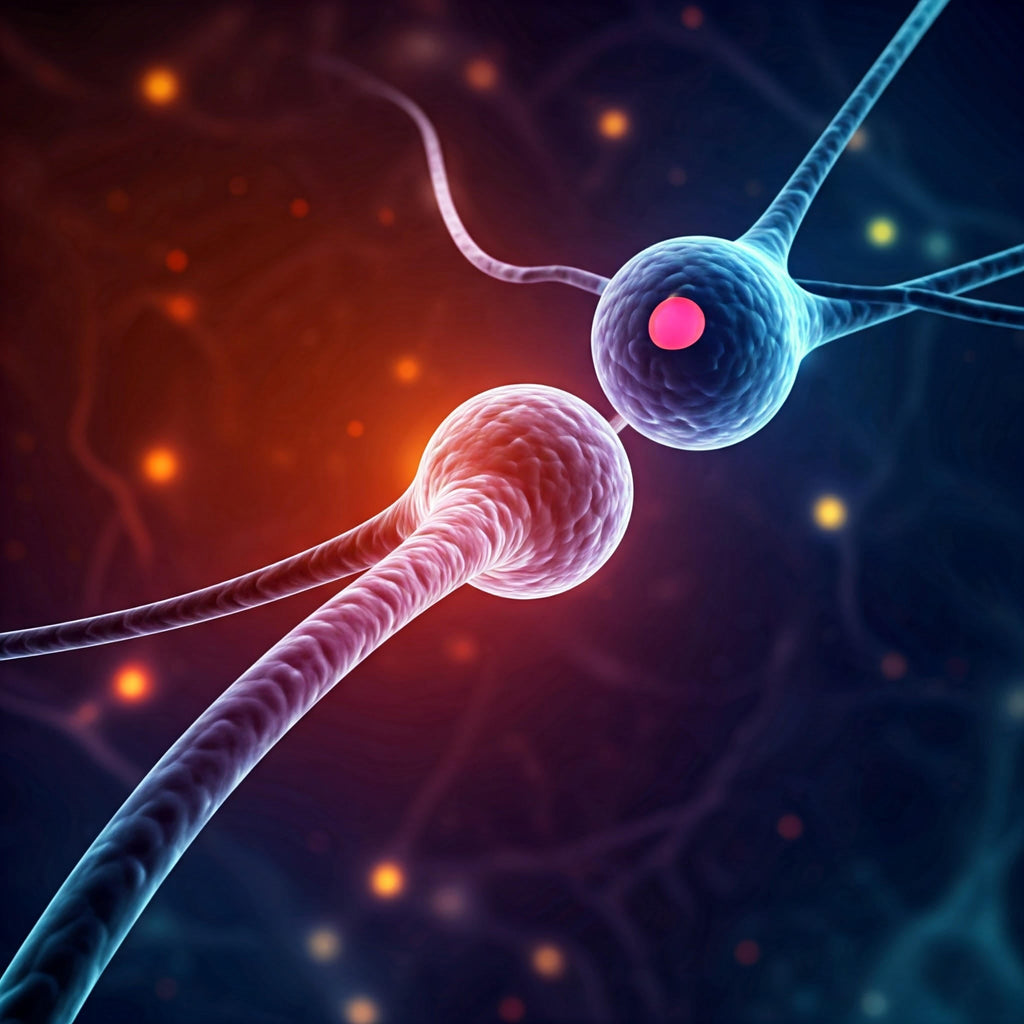What Are CBD Receptors?

When it comes to health and wellness, we take a lot of things for granted. You hear about the benefits of a product and bam! You’re sold on a product that you believe works. Yet, you have no idea why. With the recent federal legalization of hemp, CBD products are going to become that “it” product that people blindly use. However, we believe in transparency, especially with something as great as CBD products.
There are many benefits of CBD, but it takes two to tango. CBD doesn’t do all the work on its own. The benefits of CBD also live inside of you. Without CB receptors, CBD would be as useless to your body as a VCR is to a smart TV. So, what are CB receptors? Glad you asked! Let’s learn a bit more about the yin to CBD’s yang.
What are Receptors?
Before we get into specifics, let’s get a clear understanding as to what receptors are. Your body is comprised of numerous proteins, bacteria, molecules, fungi, synapses, archaea, etc. You know what else it has a ton of? Receptors!
Receptors are located all throughout the body. Their presence is crucial to almost every aspect of our lives. They play a significant role in pivotal functions such as:
- Cell growth and division
- Immune responses
- Blood and lymph circulation
- Antibody response
- Skin condition
- T-cell growth
- Pain perception
- Mood
Receptors sure sound like the real deal, huh? How do such tiny proteins rein supreme? Thought you’d never ask!
Receptors — The Communication Superhighway
Our body is a complex pathway of axons. The number of cells moving up and down these roadways would almost put LA traffic to shame. Welcome to the inner workings of your body!
Since receptors are present throughout the system, they keep an eye out for the whole body. Anytime an inflammatory response pops up in the body, the receptor attached to a neighboring cell will react.
Inflammation is behind so many of our everyday struggles including mental health issues, skin problems and achy joints. When inflammation festers, it creates an acidic environment around it. These hazardous vapors negatively stimulate the neural tissues present on the end of receptors.
When this happens, the receptors send a message along axons. These little nerve fibers interact with important governing bodies. This includes the endocannabinoid system.
What is the Endocannabinoid System?
The endocannabinoid system is related to the word “homeostasis.” Its primary goal is to make sure all is well throughout the entire body. To achieve this desired outcome, the endocannabinoid system relies on three pivotal components:
- Receptors (As we discussed, but most importantly CB1 and CB2)
- Endocannabinoids (Compounds derived from our fat cells)
- Metabolic enzymes (Catalysts to break down cannabinoids)
Receptors lie on top of cells and survey the area around its post. Being a watchdog, these receptors prepare the cells for any upcoming onslaught from inflammation. When you supplement with CBD, phytocannabinoids in the formula will seek out these receptors to perform similar functions. In the meantime, your body also creates some useful endocannabinoids.
Namely, the endocannabinoid system produces:
- Anandamide (Essential omega-6 fatty acid, neurotransmitter for joy)
- 2-AG (Esters formed from omega-6 fatty acids)
These endocannabinoids come from fat-like molecules that are stored in cell membranes. When called upon, the endocannabinoids are produced on-demand. Unlike most other biomolecular entities, endocannabinoids are only available when needed.
Upon introduction, the endocannabinoids need to be broken down. To achieve this feat, your body produces metabolic enzymes. Enzymes are the spark that makes things happen. In the case of a metabolic enzyme, these proteins help in breaking down nutrients.
There are two metabolic enzymes in particular that are responsible for digesting endocannabinoids.
Those enzymes are:
- FAAH (Catalyst for anandamide absorption)
- MAGL (Catalyst for 2-AG absorption)
Receptors, endocannabinoids and metabolic enzymes are readily available throughout the body. Anytime inflammation starts to stir up the peace inside, you can bet your receptors are on the case. Let’s take a closer look at two of the most important town criers in our body.
What are CB Receptors?
As we have covered, our body is just a trophy case of receptors. Sitting front and center above the rest are the two prize trophies of the endocannabinoid system.
These receptors are:
- CB1
- CB2
Studies define CB1 and CB2 as two G protein-coupled receptors. As everything in our body is designed to bring balance, the CB receptors are no different. Where one may drop the ball, the other is ready and willing to pick it up.
With that being said, both CB receptors have their own interests and desires. It’s like expecting two twins to be scholar-athletes. Your CB receptors are individuals and should be celebrated for such. Here is how to tell apart these two important chemical structures.
What is the CB1 Receptor?
CB1 receptors set up shop mainly around the central nervous system and brain. However, you can also find these receptors in areas such as:
- Lungs
- Liver
- Kidneys
Due to the molecular structure of the CB1 receptor, it is more compatible with THC than CBD. Therefore, many of the effects that come from stimulating the CB1 receptor result in a euphoric feeling.
Those with medical cannabis cards can get products that target the CB1 receptor. By singling out this part of the endocannabinoid system, patients may find relief in fighting symptoms associated with:
- Pain Sensations
- Nausea
- Depression/Anxiety
What is the CB2 Receptor?
The genetic composition of the CB2 receptor makes this messenger much more compatible with CBD found in the hemp plant. With that being said, CB2 receptors don’t cover as much ground as their CB1 counterparts.
You will mainly find CB2 receptors inside:
- GI Tract
- Immune Cells
- Spleen
Seeing as a majority of CB2 receptors are in the GI tract, Joy Organics formulates CBD Softgels that will bypass your stomach acids. Using microemulsion technology, our CBD particles are as small as 25 nanometers. Being at least two times tinier than other CBD products, Joy Organics’ phytocannabinoids get directly into your GI tract and right where your CBD receptors are hanging out.
Natural CBD extract may help:
- Support joint and muscle function.
- Maintain a relaxed mood.
- Promote tranquility.
- Support a good night’s sleep.
- Promote healthy skin.
- Support post-workout recovery.
- Promote internal balance.
- Maintain overall wellness.
While CB2 receptors welcome all phytocannabinoids from broad spectrum hemp oil, these messengers tend to take a real liking to 2-AG. Just as these receptors have preferences in terms of amino acids, they also interact differently with the system.
For instance, if you were to take a drop of CBD oil, the cannabinoids would bind to the CB2 receptor. This has not shown to increase appetite. Whereas, if the same person were to take a serving of THC, this molecule would bind to the CB1 receptor. Due to this interaction, you might get an increase in appetite. Hence, the whole munchies thing!
Now that you have a better understanding of each CB receptors’ function in the endocannabinoid system, let’s take a look at why this neural superhighway is so unique.
What Makes CB Receptors and the Endocannabinoid System Unique
As if the endocannabinoid system weren’t complex enough, this governing force within our body acts “backward” from most molecular processes. In a majority of systems, neurons spur the production of neurotransmitters. When a neurotransmitter secretes from a presynaptic cell, this messenger will travel across small gaps known as synapses.
Once across the synapses, neurotransmitters attach onto complimentary receptors on nearby neurons. These are known as postsynaptic cells. Typically, this interaction sets off a chain of events that allows neurons to pass the neurotransmitter’s message along to the rest of the body. This isn’t the same deal for the endocannabinoid system.
The moment a postsynaptic neuron becomes charged, cannabinoids are formulated on-demand. These endocannabinoids are created from fat tissue cells already in that particular neuron. When this happens, the newly formed cell is shot back through the synapse and to the presynaptic cell. Here, the endocannabinoids attach to the appropriate CB receptors.
When you are working with the endocannabinoid system, it’s like reading the end of the book first. From there, you have the knowledge of what to look out for during the literary journey and how to prepare for what you encounter along the way.
CBD acts as a protectant. With the knowledge of an unfavorable outcome, cannabinoids go back to the beginning. This will change how the messages of incoming neurotransmitters are perceived by the endocannabinoid system. Needless to say, cannabinoids tend to put fires out before they start, so to speak.
Things to Be Aware of with Receptors
Our bodies are so nuanced. Even more so is the endocannabinoid system living inside of us! While CB1 and CB2 receptors tend to take up residence in different areas of the body, they also have a unique amount of these receptors in said areas. The cluster of receptors within a specific area is known as their “expression.”
Receptor expression is as individualistic as a snowflake. Each person’s reaction to CBD will depend on the number of cannabinoids in their system and the expression of these receptors within the targeted area.
For example, some people may have too many CB1 receptors within their body. This overexpression can cause a person to be highly sensitive to the psychoactive elements of THC. However, underexpression is also a possibility. If you are not experiencing the benefits of CBD, you may have a low number of CB2 receptors in your system. As a result, you may need to supplement with a higher serving of CBD.
Thanks for reading! To show how much we appreciate you, we’re going to give you 16% off your next order. Just use code READER16 at checkout!

Newsletter signup
Join the Joy Organics Family
Sign up and get updates on new products, as well as special coupons and discounts.
testimonials
What Our Clients Say
“This is a company that truly cares about its customers and providing the best CBD products currently available on the market.”










Join In On The Conversation
Your email address will not be published. Required fields are marked *
Comments will be approved before showing up.